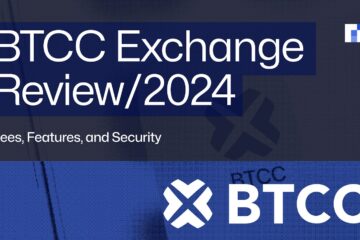Cryptocurrencies have gained significant popularity over the past few years. Nonetheless, for most investors, the process of buying and selling cryptocurrency can be tedious and fraught with challenges. Instead of enhancing adoption, this discouraged some, especially potential institutional investors, from joining the cryptocurrency market.
This guide will explore Solana ETFs, their potential benefits, risks, and opportunities for investors..
What Is Solana ETF?
Exchange-traded funds (ETFs) are investment funds traded on stock exchanges. They hold a collection of assets, such as stocks or cryptocurrencies, and are designed to track the performance of specific assets. ETFs enable investors to purchase shares in the fund, providing them with exposure to the underlying asset without requiring direct ownership.
A SOL ETF is an investment fund that allows investors to track the price of the Solana (SOL) cryptocurrency. Investors can participate in the cryptocurrency’s price movement, but without buying the digital asset itself. When you buy a Solana ETF, you gain exposure to Solana within a familiar investment environment, such as a brokerage account.
Types of Solana ETFs
There are two types of Solana ETFs: Solana spot ETF and Solana futures ETF.
Solana spot ETF: These exchange-traded funds hold the actual Solana (SOL) token, and they mirror the cryptocurrency’s real-time price movement. This ETF aims to closely track the price of SOL, providing investors with direct exposure without requiring them to own the cryptocurrency. There are types of Solana spot ETFs that may offer access to Solana staking ETF rewards, thereby enhancing returns.
Solana Futures ETFs: Rather than holding the underlying cryptocurrency, these exchange-traded funds enable users to invest in futures contracts. Investors attempt to gain returns by speculating on the future price of SOL. Participants will not own the actual SOL token. They hold contracts that represent their right to buy or sell SOL at a pre-determined date in the future.
How Do Solana ETFs Work?
Below is a step-by-step explanation of how a Solana spot ETF works:
Creation of the ETF
- Issuer: The issuer is typically a financial institution, such as a bank or Investment Company, or any other financial entity that creates the SOL ETF.
- Acquiring SOL: The issuer buys SOL tokens or any other financial tools, like futures contracts representing SOL, to back the exchange-traded fund.
Fund Structure
- Fund Setup: The issuer holds SOL tokens and sets up the ETF fund. The value of the ETF will be directly linked to the actual market value of SOL or the futures contract tracking SOL.
- Share Creation: The issuer creates ETF shares, with every share representing a portion of the asset the fund holds.
- Exchange Listing: The ETF is then listed on a stock exchange, allowing investors to buy or sell shares of the exchange-traded fund similar to ordinary stocks.
Trading the ETF
Participants can purchase shares of the SOL ETF via certified brokerages, specifying the number of shares they need. Those who already own Solana ETF shares can also sell them through brokerage accounts at the trending market price.
The ETF issuer will be responsible for managing the fund to ensure it keeps the correct amount of SOL. The issuer also charges a management fee paid annually, which is primarily a small percentage of the assets to cover the costs associated with running the ETF.
When Will Solana ETF Be Approved?
The highly anticipated approval date for the Solana ETF in the United States occurred on July 2, 2025. The groundbreaking achievement that incorporates the Solana staking ETF has finally overcome hurdles with the US Securities and Exchange Commission (SEC). The REX-Osprey Fund’s application initially faced an objection from the SEC in May, even after clearing the initial registration.
The issue at hand was whether the proposed ETF was qualified as an investment company under the existing securities laws. REX-Osprey finally managed to resolve the issue by allocating 40% of its assets to other ETPs in the US. The approval of the Solana staking ETF marks a significant milestone for crypto and traditional finance products. The move potentially opens doors for ETH staking under companies like BlackRock.
Impact of Solana ETF Approval on SOL Price
News about the launch of the first-ever SOL ETF sparked a brief 7% price surge for SOL, the native token of the Solana network. The news prompted investors to speculate whether the ETF with staking capabilities could spur institutional demand and push the price to $200. The SOL price first rallied to $161 before finally adjusting to $157. The SOL ETF issuer, Rex Shares, partnered with Osprey Funds to beat the typical SEC approval process.
SSK first day volume. Source: Eric Balchunas
Is There a Futures-Based Solana ETF?
Volatility shares introduced SOLT and SOLZ, the first-ever Solana futures ETFs to trade on the US market. SOLZ is designed to track Solana futures, while SOLT provides twice the leveraged exposure. The expense ratios for the two products are 0.95% and 1.85%, respectively. The funds acquire CME-listed Solana Futures contracts, following the model of Solana futures ETF products, similar to those for BTC and ETH. To date, the SEC has only approved Solana futures ETFs.
Volatility Shares Solana ETF (SOLZ) is the first US Solana futures ETF
Will There Be a Spot Solana ETF?
There remains widespread speculation among asset managers, including VanEck, 21Shares, and Franklin Templeton, regarding the Spot Solana ETF. The speculation is based on the previous approvals of spot Ethereum ETFs. While the US SEC is yet to approve any, experts believe that the growing demand could lead to a favorable outcome. The primary hurdles remain the potential for Solana spot ETF to follow SEC regulations and address centralization challenges.
Solana ETF Trading Opportunities
According to Bloomberg analysts, the approval of the SOL ETF could pave the way for a wave of altcoin ETFs. These include XRP, Cardano, and Litecoin, which analysts believe have a 95% chance of approval by the end of 2025. The result could be a “crypto ETF summer” similar to the one that saw billions of dollars flow with the approval of BTC and ETH ETFs.
Multiple Solana ETF applications and their odds of approval in 2025
Immediately after its launch, the ETF attracted $8 million in trading volume, indicating robust demand from investors. The inclusion of a staking feature in addition to SOL as a primary asset gives the product greater potential. The increased trading activity suggests active participation from retail and institutional investors with an appetite for SOL. The immediate implication is improved liquidity and interest in SOL trading.
Additionally, there is likely to be more on-chain staking as more SOL allocations will be anticipated. The launch of the best Solana ETF is expected to lead to increased institutional interest in the cryptocurrency market. The launch could also pave the way for more upcoming ETFs based on the market acceptance and regulatory trends.
Benefits of Investing in Solana ETFs
Convenience: The best Solana ETF will provide investors with indirect exposure to SOL. Investors will avoid the challenges associated with buying, storing, and securing crypto assets. This is especially important for individuals without the technical knowledge to manage crypto assets.
Regulation: Solana ETFs will be managed by regulated financial institutions, bringing a level of security and oversight. The results include reduced risks associated with handling cryptocurrencies, such as loss of private keys or hacking incidents.
Accessibility: Solana ETFs will make the digital asset market more accessible to a wide array of investors. Participants can get access to the product using their existing brokerage accounts when buying or selling ETF shares. As a result, investors have to set up crypto exchange accounts or separate cryptocurrency wallets.
Risks Associated with Solana ETFs
Market risk: Similar to all other crypto investments, a SOL ETF is susceptible to market risk. The value of the exchange-traded fund can fluctuate significantly depending on the price movement of SOL. Every investor needs to be psychologically prepared for volatility and potential gains or losses.
Tracking error: The performance of even the best Solana ETF may differ slightly from the performance of SOL in real-time. The discrepancy, known as tracking error, is caused by external factors such as system inefficiencies, management fees, or the use of derivatives.
The Future of Solana ETFs
The launch of this SOL ETF is good news not just for the Solana community but also for the entire crypto industry. As the cryptocurrency market continues to grow, regulations continue to mature, and innovative products emerge. This bodes well for the bright future of crypto investors in the United States and beyond.
The introduction of Solana ETFs coincides with the planning of many financial institutions to launch crypto ETFs. While Solana spot ETFs are not yet available, there’s growing demand from both retail and institutional investors. This highlights the growing interest in products that offer indirect access to the Solana ecosystem and the SOL ecosystem.
By enabling investors to gain exposure to SOL without buying or managing the cryptocurrency, ETFs bring convenience. Additionally, the level of accessibility and regulations associated with Solana ETFs is likely to attract investors interested in SOL. However, it is essential to learn about related risks before making a decision. Solana ETFs could become the missing link between the cryptocurrency market and traditional finance.
FAQs
Does Solana have an ETF?
On Wednesday, July 2, 2025, the US Securities and Exchange Commission (SEC) approved the first-ever Solana ETF. Christened REX-Osprey SOL and Staking ETF, the fund enabled users to get exposure to SOL, the native token of Solana.
Can Solana reach $1000?
Solana was launched in 2020 and has remained popular ever since. As the demand grew, it surpassed the $100 mark within the first three years. According to experts, Solana could reach $1,000, but not in 2025. Analysts predict that if everything remains constant, the earliest SOL could reach $1,000 would be 2025.
What is the best way to invest in Solana?
If you’re interested in investing in Solana, the first step would be to set up a non-custodial wallet. This will give you complete control over your assets. Solana staking would be an ideal way to invest your tokens, rather than having them lie idle in your wallet. You will be able to earn passive income in terms of rewards paid by the blockchain.
Is there a 2x Solana ETF?
SOLT provides a 2x leveraged Solana ETF. The product offers investors 2x leveraged daily exposure to the SOL price movement and pays dividends annually.
 Bitcoin
Bitcoin  Ethereum
Ethereum  Tether
Tether  XRP
XRP  USDC
USDC  Solana
Solana  TRON
TRON  Lido Staked Ether
Lido Staked Ether  Dogecoin
Dogecoin  Figure Heloc
Figure Heloc  Cardano
Cardano  WhiteBIT Coin
WhiteBIT Coin  Bitcoin Cash
Bitcoin Cash  Wrapped stETH
Wrapped stETH  Wrapped Bitcoin
Wrapped Bitcoin  USDS
USDS  Wrapped eETH
Wrapped eETH  Binance Bridged USDT (BNB Smart Chain)
Binance Bridged USDT (BNB Smart Chain)  Chainlink
Chainlink  Monero
Monero  LEO Token
LEO Token  WETH
WETH  Stellar
Stellar  Zcash
Zcash  Coinbase Wrapped BTC
Coinbase Wrapped BTC  Ethena USDe
Ethena USDe  Litecoin
Litecoin  Hyperliquid
Hyperliquid  Sui
Sui  Avalanche
Avalanche  sUSDS
sUSDS  Hedera
Hedera  Dai
Dai  Shiba Inu
Shiba Inu  USDT0
USDT0  PayPal USD
PayPal USD  Cronos
Cronos  Uniswap
Uniswap  World Liberty Financial
World Liberty Financial  Toncoin
Toncoin  Mantle
Mantle  Ethena Staked USDe
Ethena Staked USDe  Canton
Canton  Polkadot
Polkadot  USD1
USD1  Rain
Rain  Bitget Token
Bitget Token  MemeCore
MemeCore 


